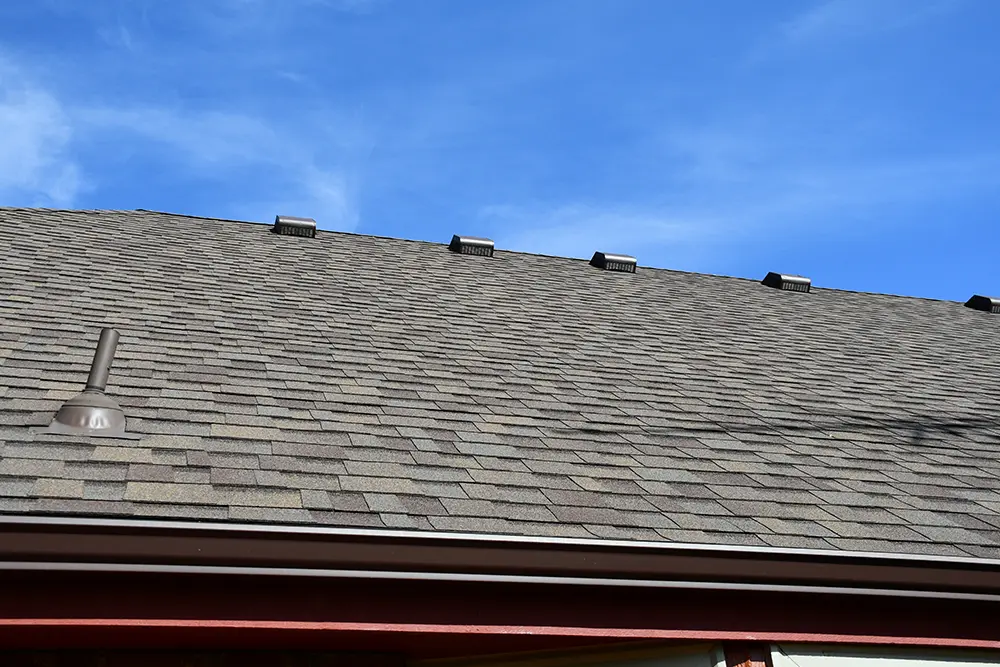As a roofing contractor, you know that a critical part of your job is ensuring that a home or building has proper ventilation. But what exactly is roofing ventilation, and why is it so important? In this blog post, we’ll answer those questions and more as we explore the different types of roofing ventilation and their benefits. Read on to learn more!
What is Roofing Ventilation?
Roofing ventilation is the process of installing vents in a home or building to allow stale hot air to escape and cool fresh air to enter. This is important because it helps regulate the temperature inside the house or building, extending the roof’s life and preventing ice dams from forming in cold weather.
Why is Ventilation Important?
Proper roofing ventilation is essential for several reasons. First, it helps regulate the temperature in your attic space. In the summer months, excessive heat can build up in your attic and cause your air conditioning unit to work overtime. This not only raises your energy bills, but it can also shorten the lifespan of your AC unit. In the winter months, a well-ventilated attic will help to prevent ice dams from forming on your roof.
Another reason why roofing ventilation is so important is that it helps to prevent moisture damage. Excess moisture can lead to wood rot, weakening your home’s structural integrity. Ventilation helps to remove excess moisture from the air, thus preventing wood rot and other types of moisture damage.
Finally, proper roofing ventilation helps to prevent mold and mildew growth. Mold and mildew thrive in moist environments, so by removing excess moisture from your attic space, you’re also helping to prevent mold and mildew growth.
Maximize Your Roof's Longevity with the Right Ventilation Options
Now that you know why ventilation is so essential, it’s time to explore the different types of roofing ventilation and their benefits. The most common types of roofing ventilation are ridge vents, soffit vents, and turbine units.
Ridge Vents
Ridge vents are installed along the roof’s peak, allowing hot air to escape through the top of the home or building. They are typically made of metal or plastic and have a screen that prevents animals and insects from entering the house or building.
Soffit Vents
Soffit vents are installed in the soffits (the underside of the eaves), allowing cool air to enter the attic space. They are often made of plastic or aluminum and have screens that prevent animals and insects from entering the home or building.
Wind Turbine Units
Turbine units are also installed in the soffits, allowing cool air to enter the attic space. They consist of a fan powered by wind, which helps ventilate the attic space even when no current is outside. Turbine units are less common than ridge vents or soffit vents because they require regular maintenance to keep them functioning correctly.
Why Investing in Quality Roofing Ventilation Is a Must-Do for Your Home
As a roofing contractor, you know how important it is to ensure your customers’ roofs are solid and durable. But did you know that proper ventilation can make a crucial difference in the lifespan of any roof?
Increases Roof Lifespan
One of the essential advantages of having the best roofing ventilation for your customer’s home or business is that it increases their roof’s lifespan. Properly ventilated roofs are less likely to experience moisture buildup, which can cause rot and deterioration over time. With good roofing ventilation, your customer can enjoy their roof for years without costly repairs or replacements. Moreover, as a bonus, adequately ventilated roofs also provide better insulation against extreme temperatures, which helps keep energy costs down.
Maximizes Air Circulation
Another advantage of good roofing ventilation is that it maximizes air circulation throughout the home or business. This helps reduce odors and other pollutants in the air, which can lead to health issues if left unchecked. Furthermore, proper air circulation helps reduce humidity levels within the building, preventing mold growth. Mold growth can result in serious health problems and require expensive repairs, so ensuring there’s plenty of fresh air circulating will help keep your customers safe and healthy while saving them money in the long run.
Prevents Ice Dams
In conclusion, one of the essential advantages of efficient ventilation for a residential roof is that it can prevent ice dams from appearing in winter. Ice dams come about when the heat rises up through an attic and melts snow on top of a frosty rooftop rather than permitting it to melt away normally. The melted snow then re-freezes at the edge of the rooftop, where it meets cold air from outside, resulting in an ice dam that can cause extensive damage to roof shingles and even allow water leakage into a home if not addressed quickly enough. With proper ventilation, however, this issue could be avoided altogether!
The Need-to-Know on Roof Vents
No two homes are alike; each requires different considerations when selecting an appropriate ventilating system. These include climate, roof type, and building construction. Let’s take a closer look at each one:
Climate Considerations
The climate in which your customer lives will significantly impact their ventilation needs and requirements. For example, suppose your customer lives in a hot environment such as Texas or Arizona, where temperatures can reach more than 100 degrees Fahrenheit during the summer. In that case, a ventilated attic will be essential for preventing heat from accumulating. This helps reduce energy costs during hot summers. On the other hand, if your customer lives in a cold climate such as Wisconsin or Minnesota, where temperatures can dip below zero during winter, they may need extra insulation and adequate ventilation so that snow and ice don’t build up on their roof.
Roof Type
The type of roof your customer has will also affect its ventilation needs. If your customer has a flat roof made out of asphalt shingle or metal sheets, they’ll need more insulation and ventilation than someone with a sloped or pitched roof, as flat roofs are more prone to heat buildup. You should also consider any special features like skylights or chimneys when determining the best type of roofing ventilation system for their home.
Building Construction
Finally, evaluating the building construction is important when selecting a ventilating system for your customer’s home. Consider what materials were used in constructing the walls and ceilings—are they insulated? Are there any air leaks? Inspecting existing vents is vital to ensure they are correctly placed and functioning. Depending on these factors, you may need to install additional vents to provide adequate airflow throughout the house while still protecting against condensation buildup inside walls and ceilings.
How Not to Botch Your Roof Ventilation System Installation or Replacement
One wrong move during installation or replacement can spell disaster for your clients—and your livelihood. To save time, money, and stress, having the proper knowledge and skills to do the job right first is crucial.
Before beginning any roof ventilation system project, you must know precisely how to complete it. This means researching by reading up on relevant material, looking at instructional videos online, and even consulting colleagues if needed.
In addition, it’s tempting to try and save money and time by using cheap materials; however, this could cost more in the long run as these materials may not withstand certain weather conditions, such as strong winds or heavy rain. Use high-quality materials that will last for years without needing repair or replacement.
Lastly, vents must be properly installed according to industry standards to prevent air leaks from occurring later on down the line. Ensure that all seals are properly sealed in place, and pay close attention to areas where two pieces meet together; these areas should also be checked frequently for signs of wear and tear over time.
When it comes down to it, finding the best way to ventilate your clients’ homes requires careful consideration and research on your part as a professional building contractor. By familiarizing yourself with different types of roofing ventilation options available today—and understanding how each type benefits specific environments—you’ll be well on your way towards finding the perfect fit for each homeowner!
Supercharge Your Next Project with Exceptional Products from Wimsatt Direct
Are you a building contractor in Michigan or Northern Ohio looking to source superior roofing materials? Look no further than Wimsatt Direct! We offer an unbeatable selection of roofing supplies backed by exceptional customer service that is second to none. Our products are crafted with durable materials, engineered for superior performance, and designed to last through even the most extreme weather conditions. Plus, our prices are always competitive, and our delivery times are unmatched. So don’t wait any longer – use Wimsatt Direct for all your roofing material needs today and experience the difference yourself!





